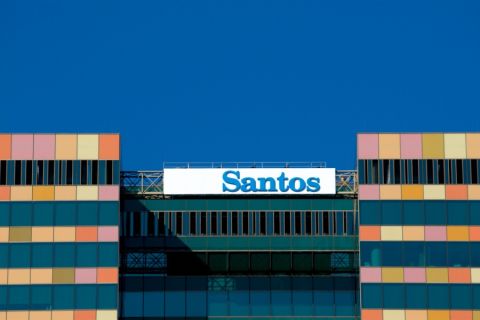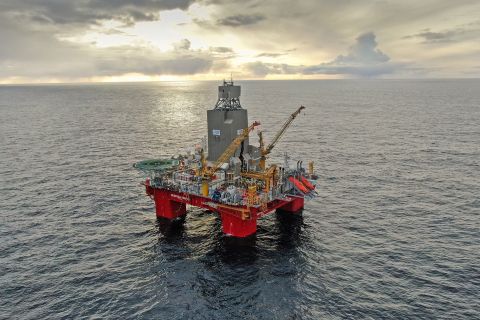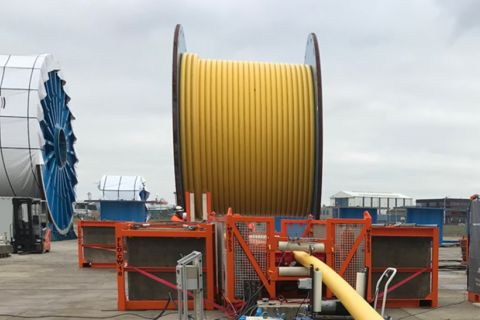
In an early July report, J.P. Morgan noted that E&P efforts to shift to a strategy of generating free cash flow “have yet to translate into equity performance” and improved multiples. (Source: Hart Energy/Shutterstock.com)
[Editor's note: A version of this story appears in the September 2019 edition of Oil and Gas Investor. Subscribe to the magazine here.]
One can only hope that some of the worst for energy is behind us, and that some of what is forecast to come doesn’t materialize. The correlation between energy stocks and crude oil seems to be slipping, or possibly broken, even with a backdrop of potentially escalating geopolitical events. Stock valuations are down hard, but have they yet discounted a worst-case scenario?
In an early July report, J.P. Morgan noted that E&Ps remain disconnected from the commodity, with the XOP (S&P Oil & Gas Exploration & Production ETF) underperforming the prompt futures contract for West Texas Intermediate (WTI) by roughly 27%. E&P efforts to shift to a strategy of generating free cash flow (FCF) “have yet to translate into equity performance” and improved multiples.
With the SMID-cap E&P group trading at about a two multiple discount to its large-cap peers, the report raised the possibility of a “capitulation” by some SMID-caps to takeover moves. This would be despite the fact they had built asset bases at costs that were “significantly higher than where the market is currently discounting their equity values.”
The report was issued after news of Occidental Petroleum’s acquisition of Anadarko Petroleum, but before Callon Petroleum’s bid for Carrizo Oil & Gas.
Market reaction to the all-stock Callon-Carrizo combination was ugly. While Carrizo was being acquired at an ostensible 25% premium to its prior day closing price, the premium soon melted away. In the five days following the announcement, Carizzo’s stock was down 10%, while Callon’s stock tumbled 23%.
Several research firms linked the negative stock reaction to Callon being viewed by some as a potential consolidatee.
Tudor, Pickering, Holt & Co. (TPH) estimated that, pro forma for the acquisition, Callon would have 11% production growth and generate $110 million of FCF at strip prices in 2020. It noted that “only a few select names offer a combination of double-digit production growth and meaningful FCF with less than 2 times net debt-to- EBITDA leverage.”
At $4.80 per share, Callon’s stock was trading at a mere 3.3 times enterprise value-to-EBITDA (EV-to-EBITDA), based on a 2020 price deck of $56 per barrel (bbl) for WTI and $2.56/Mcf for gas.
Only a little over a week earlier TPH had calculated fresh valuations using the above price deck. On average, large-cap E&Ps were trading at 5.4 times EV-to-2020 EBITDA, with 27% upside to net asset value (NAV) and a FCF yield of 6%, while SMID-caps traded at a lowly 4.1 times EV-to-2020 EBITDA, with 85% upside to NAV and a 1% FCF.
These would appear modest valuations, unless further pressure on crude prices lies ahead, as TPH says may occur. Even if U.S. producers slow production growth, the U.S. may alone meet 2020 global demand growth, which TPH projects at 1.5 MMbbl/d in a “generous recovery.” Non-OPEC supply growth, including 1.6 MMbbl/d from the U.S., is put at 2.4 MMbbl/d in 2020.
In a mid-June report, Barclays took its WTI price forecast for 2020 down by $6/ bbl to $62/bbl. In a nuanced commentary, it lowered global demand estimates by roughly 400,000 bbl/d and 500,000 bbl/d for 2019 and 2020, respectively. However, “concerns of a glut are overdone,” it said, “and several underlying trends lead us to believe that the shale growth engine is slowing.”
Positive factors supporting oil prices include new International Maritime Organization rules that come into effect on Jan. 1, 2020. It’s unclear how much advance work has been done to cover incremental demand for distillates under the new rules, but what was once expected to be a jump in demand appears to have softened due to global trade frictions.
For the U.S., a positive has been its ability to ramp up exports and penetrate new overseas markets. Loadings by very large crude carriers reached a record 21 in June, and prior to Storm Barry estimates were for a robust 17 loadings in July. Since mid-June, exports have run near or above 3 MMbbl/d, barring Barry disruptions.
Although the U.S. has built export markets—and likely narrowed the Brent-WTI spread—has it simply spread the pain of slack oil markets elsewhere amid trade conflicts?
According to trade sources, it is Iran’s exports into “bonded storage” in Chinese ports that could also weigh on global prices—and partly explain a near absence of oil price spikes. The Iranian barrels, sitting outside the world’s largest oil importer, don’t show up in import data and are technically not a breach of sanctions.
Recommended Reading
Santos’ Pikka Phase 1 in Alaska to Deliver First Oil by 2026
2024-04-18 - Australia's Santos expects first oil to flow from the 80,000 bbl/d Pikka Phase 1 project in Alaska by 2026, diversifying Santos' portfolio and reducing geographic concentration risk.
Iraq to Seek Bids for Oil, Gas Contracts April 27
2024-04-18 - Iraq will auction 30 new oil and gas projects in two licensing rounds distributed across the country.
Vår Energi Hits Oil with Ringhorne North
2024-04-17 - Vår Energi’s North Sea discovery de-risks drilling prospects in the area and could be tied back to Balder area infrastructure.
Tethys Oil Releases March Production Results
2024-04-17 - Tethys Oil said the official selling price of its Oman Export Blend oil was $78.75/bbl.
Exxon Mobil Guyana Awards Two Contracts for its Whiptail Project
2024-04-16 - Exxon Mobil Guyana awarded Strohm and TechnipFMC with contracts for its Whiptail Project located offshore in Guyana’s Stabroek Block.




